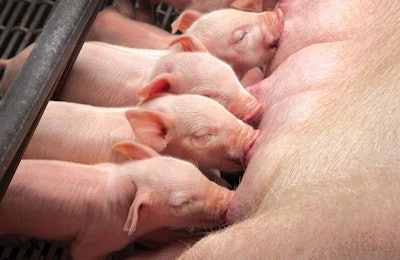
Editor's note: This is the fourth installment of a four-part series provided by Novus International. Read the first, second and third installments of the Back to Basics series.
Pork producers have grown accustomed to facing production challenges. Large market fluctuations and low performance have large effects on profitability, but producers do not often have control over these challenges. Animal nutrition optimization allows producers to have more influence on their bottom line.
Micro-ingredients in particular can have a significant impact in achieving production objectives. However, micro-ingredients, including trace minerals, can all too often be overlooked in the feed formulation process. Such oversight can also go as far as to include consideration of the mineral source and if these minerals are actually being absorbed and used efficiently within the animal.
How pigs utilize trace minerals
Trace minerals are essential for pig growth, reproduction and overall health. Their functions are very different, playing key roles in many metabolic and biological systems. Therefore, selecting the right trace mineral source is essential in getting maximum returns from the investment made. Often times, feed formulations include inorganic salts as sources of copper, zinc and manganese, but much of these trace minerals are excreted and left unused by the animal. That not only wastes the producer’s money, but also sends large amounts of minerals into the surrounding environment.
Sows and piglets are presented with their own set of performance challenges in the production environment. Sows can succumb to lameness and reproductive problems, which account for the greatest economic impact on the producer in comparison to other sow challenges.
According to the National Research Council (2012), lactating sows have double the requirement of copper compared to gestating sows, which shows how demanding high performance animals are today. In addition, there is a progressive bone demineralization for high performance sows, which leads to several challenges also related to the above mentioned.
Piglets have issues specific to their age, including diarrhea, poor growth, limited feed intake, immune system development and slow-growing pigs. These challenges can be minimized by ensuring adequate trace mineral nutrition. Including highly bioavailable organic trace minerals, such as metal methionine hydroxy analogue chelates (MMHAC), creates the greatest opportunity to reach optimum production performance in swine operations.
MMHAC in sow diets
Sows fed MMHAC chelated trace minerals can receive benefits such as an improved farrowing rate, less overall removal rate and removal rate due to locomotion problems, improved reproductive performance, improved mobility, heavier piglets at birth and better progeny performance versus sows fed other sources of trace minerals.
Lameness, one of the other primary reasons for the removal of young sows, can be caused by several different factors. Structural defects, claw lesions, uneven toes and infectious agents can all lead to lameness and poor locomotion. Osteochondrosis, a disease resulting from a disturbance in the growth plate cartilage, predisposes sows to leg weakness. Through adequate trace mineral nutrition, these locomotion issues can be severely diminished due to increased mineral availability for bone and tissue development. The high bioavailability of MMHAC results in more usable mineral for the animal, which supports increased production parameters.
Piglet nutrient requirements
Just as with sows, mineral nutrition plays a vital role in the growing pig. Meeting the young pig’s essential nutrient requirements during these growing periods is critical to improving feed intake and efficiency, as well as promoting growth performance. Even before birth, piglets can receive the residual benefits of sows being supplemented with chelated trace minerals. This is why essential nutrient requirements should be met in all stages of the animal’s life.
Copper is an especially important component of functional immune systems and contributes to optimal performance in several ways. It is essential for iron utilization, contributes to collagen development for tissue and bone health and is necessary for normal metabolic function. When supplemented as MMHAC, copper inclusion can also aid in the reduction of diarrhea incidence and an improved immune response when compared with other mineral sources.
As production parameters continue to be tightened, trace mineral nutrition is becoming more important in maintaining the animal’s health and improving performance capabilities. While trace minerals have been supplemented in inorganic forms for decades, the paradigm is shifting to a more complete solution to meet producers’ needs for a viable source of mineral nutrition. Supplementing zinc, copper and manganese as MMHAC chelated trace minerals in swine operations allow producers to maximize their profitability and get more from their animals.
References available upon request.















